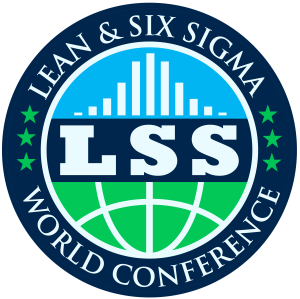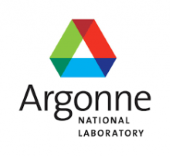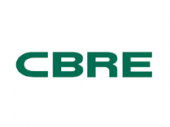 |
|  |
|
ABSTRACT The Future of RCA: Machine Learning-Driven Root Cause DISCOVERYIndustry: All Industries Keywords: Root Cause Analysis, Classification and Regression Trees, Machine Learning Level: Intermediate LinkedIn: https://www.linkedin.com/in/karina-dube-9538b77b/ Root Cause Analysis is a critical skill that all organizations need to possess and expand to succeed in today's ever-changing, complex environment. With the advancement of the digital age, immense amounts of data are captured constantly. While this creates an opportunity to understand issues at more profound confidence levels, it comes with new challenges. The sheer volume of data at our disposal has brought about a surge in irrelevant information (or noise), increasing the need for filters and levels of focus unlike anything we've encountered before. Machine learning presents an opportunity to augment our traditional root cause analysis toolkit by accelerating our problem-solving while also facilitating the discovery of more nuanced contributors to root causes. In this session, we will discuss how machine learning can support more complex root cause analysis efforts and the challenges you might encounter in its implementation. Traditional RCA tools: This section will outline traditional root cause analysis tools. We will explore root cause maps, value stream mapping, fishbone diagrams, spaghetti diagrams, and process flow diagrams. The Rise of Machine Learning in RCA: First, we will define machine learning as a subset of artificial intelligence (AI) that can learn from data and make predictions without being explicitly programmed. In the context of RCA, it acts as a force multiplier, augmenting human capabilities and enabling organizations to tackle complex problems more efficiently. Then, we will dive into how machine learning can enable greater RCA capabilities. 1. Enhanced Data Analysis Machine learning models can use historical data to identify patterns, anomalies, and correlations that may elude human analysts with speed and precision. This enhanced data analysis capability is particularly valuable in industries where large volumes of data are generated, such as manufacturing, finance, and healthcare. 2. Predictive Insights Machine learning goes beyond establishing cause; it can make predictions based on data trends. In RCA, this means identifying current root causes and predicting potential issues before they occur. This proactive approach allows organizations to implement preventive measures. 3. Real-time Monitoring and Alerts Machine learning algorithms can continuously monitor processes and systems in real-time, instantly flagging anomalies or deviations from expected behavior. This real-time monitoring enables a more swift response to emerging issues, preventing them from evolving into major problems. This capability is particularly critical in industries where safety and reliability are crucial. 4. Uncovers Multiple Contributing Factors Machine learning can analyze vast datasets and uncover intricate relationships in a way that is challenging to do manually. Using statistical analysis and employing techniques like pattern recognition, feature importance, factor interactions, ensemble methods, and iterative refinement of the algorithm, machine learning automates the task of finding complex interactions when there are multiple contributing factors to cause. A real-world application: This section will explore a large dataset detailing national bank customers. In this dataset are several categorical features of the banks’ clientele, including age, education level, tenure at the bank, estimated salary, and more. Continuous variables such as change in account balance are also in the dataset. The bank is experiencing higher-than-normal customer churn. An RCA is employed to discover why. We will use this storyline to walk through a C/RT example and explain its importance and applicability in RCA. Challenges and considerations While the potential of machine learning-driven RCA is immense, it is not without challenges and considerations: 1. Data Quality 2. Interpretability 3. Expertise 4. Ethical Considerations: As with any technology, machine learning in RCA raises ethical considerations, especially when dealing with sensitive data or making critical decisions. Organizations must establish ethical guidelines and frameworks for its use. Conclusion: As organizations seek to optimize processes, improve reliability, and mitigate risks, machine learning-driven RCA emerges as a transformative force. We will end with a quick reminder of the three goals of root cause analysis: Goal 1: Discover the root cause of a problem or event. Goal 2: Understand how to correct the underlying issue(s) that caused it. Goal 3: Apply what we learn to systematically prevent it from occurring again. While conventional RCA tools certainly play a role in achieving these goals, our constantly evolving world compels us to harness machine learning to move beyond discovery of root cause (goal 1) to proactively oversee processes and predictively intervene before issues manifest (goal 3). | BIOGRAPHY Karina DubéEngineRoom Product Manager, MoreSteam, Powell, OH, USA Karina Dubé joined MoreSteam in 2014 as part of the development team working on online Lean Six Sigma training. She is currently the product manager for EngineRoom, MoreSteam's online data analysis software for process improvement. Prior to her work on EngineRoom, Karina served as the lead designer on Process Playground, MoreSteam’s online discrete event simulator. Karina is savvy in translating technical details into user-friendly interfaces for easy-to-use modeling and data analysis software. She is passionate about using data to make informed and impactful decisions and her passion spurred her to receive a Certificate in Data Science from the University of Notre Dame. Karina has a B.S. in Electrical Engineering and a Master of Science in Interactive Media from University College Cork, Ireland. |



































































































